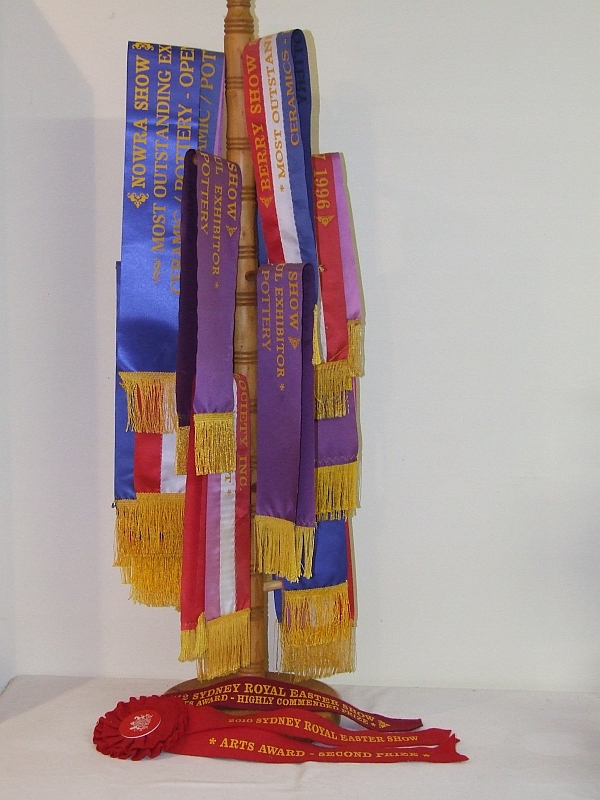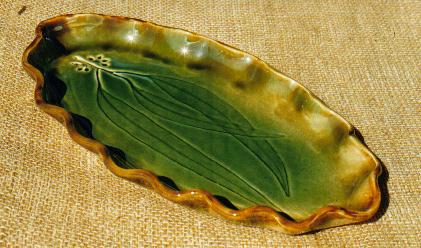
It's only a small scale "cottage
industry" venture,
operating
since 1988. We began with a small
electric kiln (6 cubic feet), bought in
a burnt-out state and rebuilt from the
ground up. Some years later we built a
larger gas-fired fibre kiln (27 cubic
feet), and later still a smaller test
kiln (2 cubic feet). And eventually, a
wood-fired kiln too.
Who makes the pots? Just two of us, man and wife. Not a lot of qualifications as potters go... four years at Tech College, part time (and it was fun, too). But countless thousands of pots made and sold since then. We're both getting older and slower now, but we try to keep up.
.
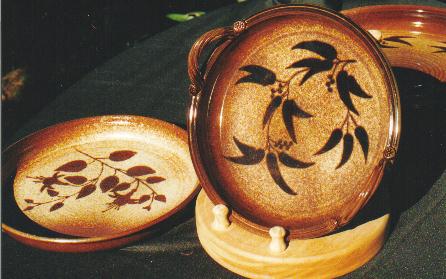
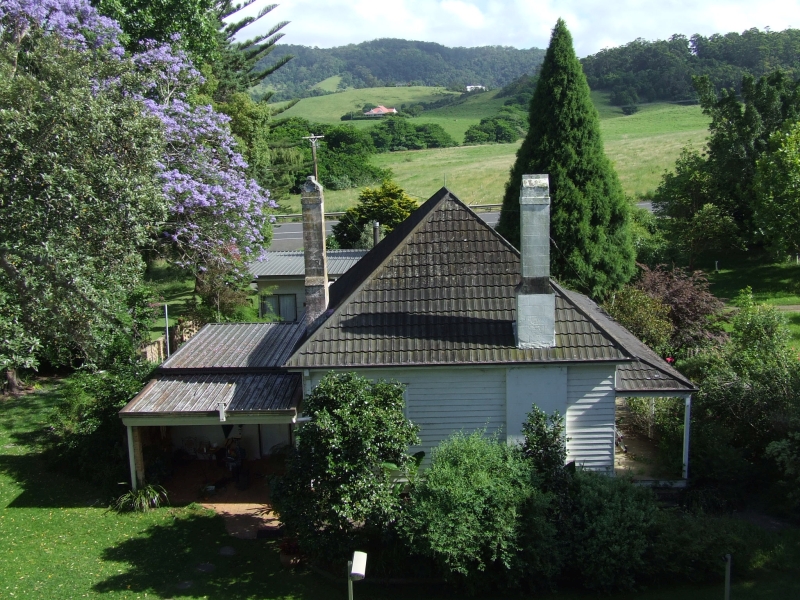
Opening the kiln door after a new
firing is rather like
opening a Christmas present. Some pots probably
better than expected, others not so good.
Glazing all these pots may have taken several days,
with details of glaze application carefully
recorded in the kiln log book. Which glaze,
dipped or sprayed or both, how much glaze
by weight or by volume.... and so on.
The idea of course is, if the fired glaze is outstandingly
good, we'd like to do it again. And if it's not so good (too
thin, too thick, underfired, or whatever else) then write
comments in the log book, so we can do better next time.
opening a Christmas present. Some pots probably
better than expected, others not so good.
Glazing all these pots may have taken several days,
with details of glaze application carefully
recorded in the kiln log book. Which glaze,
dipped or sprayed or both, how much glaze
by weight or by volume.... and so on.
The idea of course is, if the fired glaze is outstandingly
good, we'd like to do it again. And if it's not so good (too
thin, too thick, underfired, or whatever else) then write
comments in the log book, so we can do better next time.
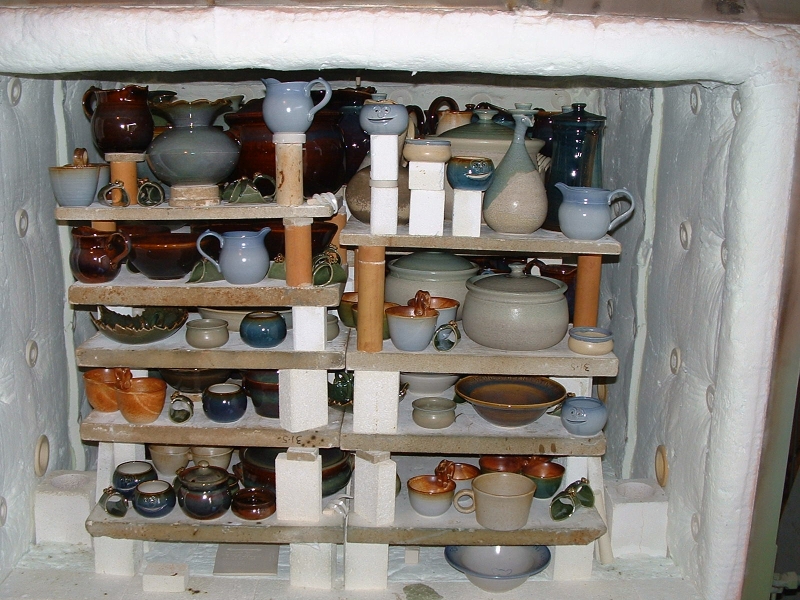
For some years we were puzzled by
the number of customers who asked "Do you sell in
shops?" (No, we don't. Just keeping up with things
here at home keeps us busy). Why did they
keep asking this? It dawned on us that, maybe,
this was a polite way to ask "Are your pots good
enough to be sold in a shop?"
Well, we know we're good. We admit it ourselves. So we rummaged in the cupboard and brought out a selection of prize ribbons, and hung them on a stand in the display room.Surprise, surprise! Nobody ever asks any more, "Do you sell in shops?"
Well, we know we're good. We admit it ourselves. So we rummaged in the cupboard and brought out a selection of prize ribbons, and hung them on a stand in the display room.Surprise, surprise! Nobody ever asks any more, "Do you sell in shops?"
The
pots get better every year, but the horizon
keeps retreating....
